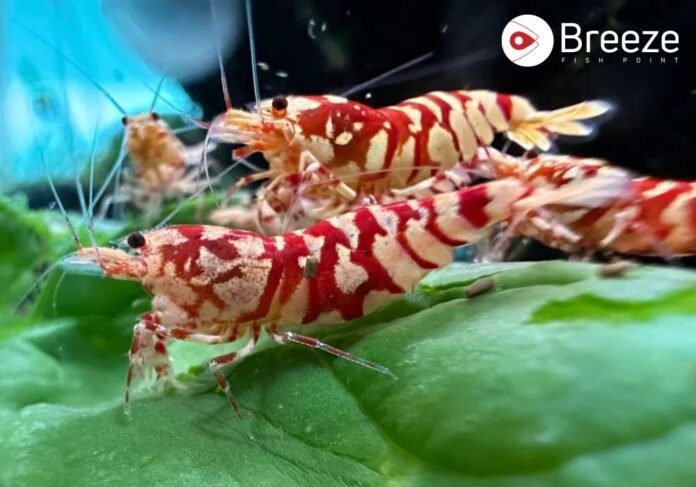Hey there, aquarium lovers! If you’re craving a splash of color and a dash of personality in your tank, neocaridina shrimp are your go-to buddies. These little guys, often munching on crispy spicy shrimp crackers (okay, not really, but they’re just as delightful!), are tiny powerhouses of charm. Whether you’re a newbie or a seasoned aquarist, neocaridina shrimp—think vibrant cherry shrimp or dazzling skittles shrimp—bring life to any shrimp fish tank.
In this blog, we’ll dive deep into everything you need to know about neocaridina shrimp care, from setting up the perfect aquarium shrimp habitat to feeding baby shrimp and understanding their lifespan. Let’s get those tanks bubbling with excitement!
Table of Contents
What Are Neocaridina Shrimp and Why Are They So Popular?
Neocaridina shrimp (Jhinga Fish) are freshwater darlings, perfect for anyone looking to add some pizzazz to their shrimp fish tank. These tiny crustaceans, scientifically known as Neocaridina davidi, are loved for their vibrant colors, low-maintenance care, and peaceful nature. Whether you’re setting up a live shrimp aquarium or just want shrimp as a pet, neocaridina shrimp are a fantastic choice. Here’s why they’re stealing the show:
- Vivid Colors: From fiery red cherry shrimp to electric blue or even multicolored “skittles” varieties, they’re like living jewels.
- Easy Care: Neocaridina shrimp care is beginner-friendly, making them ideal for new aquarists.
- Tank Cleaners: These little guys are natural scavengers, keeping your aquarium shrimp tank sparkling clean.
- Breeding Ease: They reproduce quickly, so you’ll soon have a thriving colony of baby shrimp in your aquarium.
Pro Tip: Start with a small group (10–15 shrimp) to ensure a healthy, breeding population without overcrowding.
What Do Live Shrimp Look Like in an Aquarium?
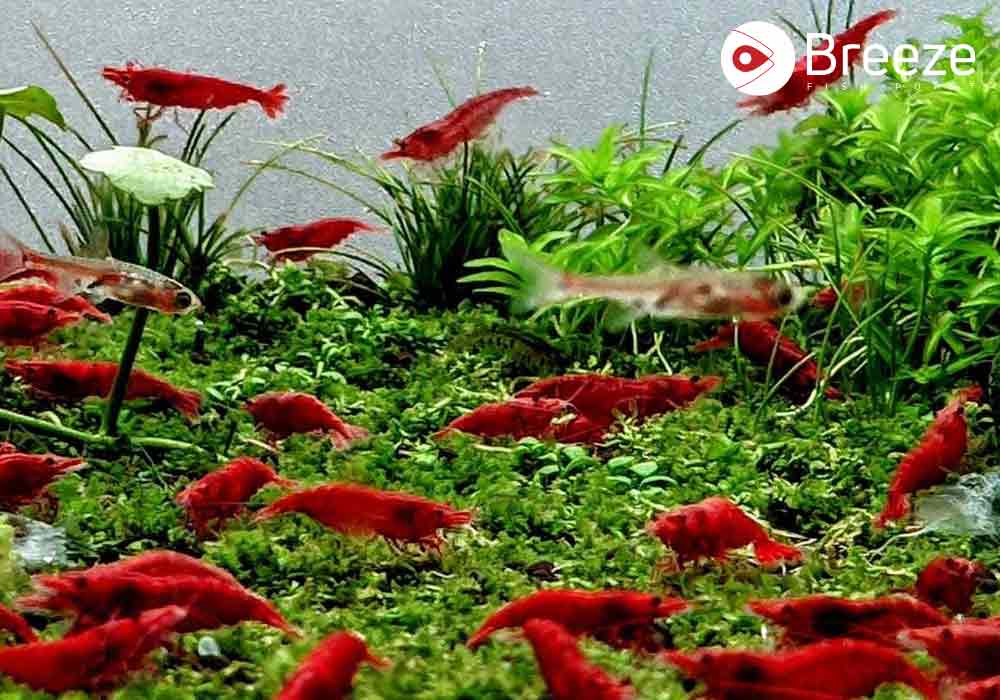
Ever wondered, “What do live shrimp look like?” Picture tiny, translucent creatures with pops of color scooting around your tank. Neocaridina shrimp are about 1–1.5 inches long, with delicate legs and a slightly curved body. Their colors range from deep reds (cherry shrimp) to blues, yellows, and even greens in a skittles shrimp tank. You’ll spot them grazing on algae, zipping between plants, or perching on driftwood like mini acrobats.
- Appearance: Semi-transparent with bold color variations; females are often more vibrant.
- Behavior: Active scavengers, constantly exploring or “dancing” in the water.
- Unique Trait: Their tiny fan-like tails flick as they swim, making them oddly mesmerizing.
How to Set Up the Perfect Shrimp Fish Tank?
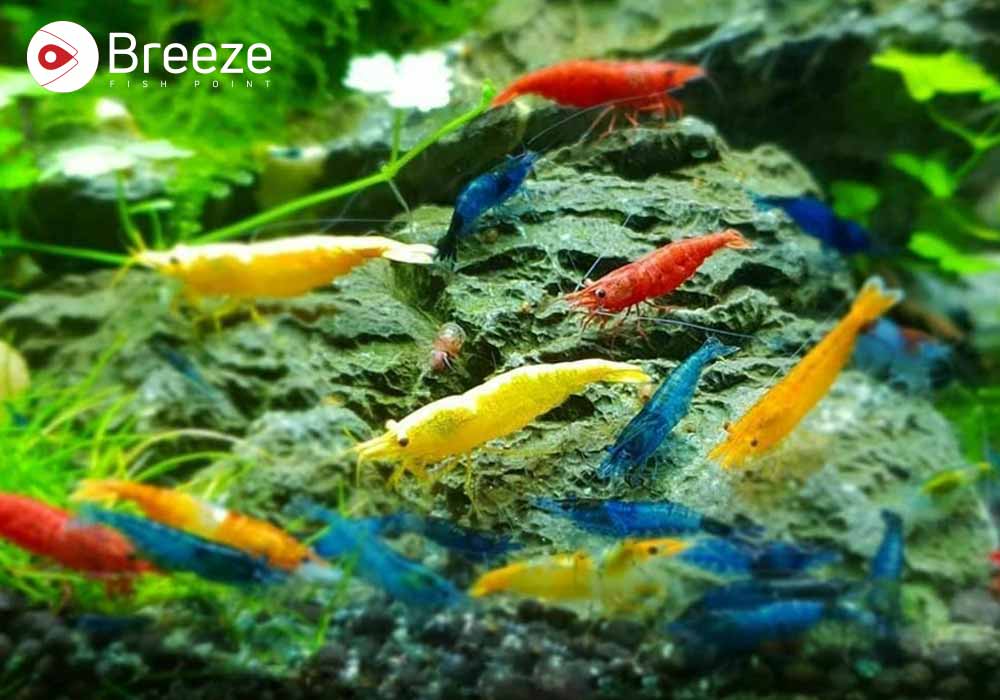
Creating a shrimp fish tank that neocaridina shrimp will love isn’t rocket science, but it does need some TLC. A well-set-up live shrimp aquarium keeps your shrimp healthy and happy. Here’s how to do it:
- Tank Size: A 5–10 gallon tank is perfect for beginners. Smaller tanks are easier to manage for neocaridina shrimp care.
- Substrate: Use fine gravel or planted aquarium substrate to encourage algae growth, a natural food source.
- Plants: Add hardy plants like Java moss, Anubias, or water sprite. These provide hiding spots and grazing areas.
- Filtration: A gentle sponge filter is ideal—strong currents stress shrimp out.
- Decor: Driftwood, rocks, or shrimp tubes create cozy hideouts for your aquarium shrimp.
- Lighting: Low to moderate lighting works best to mimic their natural habitat.
Magic Tip: Add Indian almond leaves or alder cones to release tannins, which mimic natural water conditions and promote shrimp health.
What Are the Best Water Parameters for Neocaridina Shrimp Care?
Parameter | Ideal Range |
Temperature | 65–75°F (18–24°C) |
pH | 6.5–8.0 |
General Hardness (GH) | 6–12 dGH |
Carbonate Hardness (KH) | 3–10 dKH |
Ammonia/Nitrite | 0 ppm |
Nitrate | <20 ppm |
How to Maintain:
- Test Regularly: Use a liquid test kit to monitor pH, GH, KH, and ammonia levels.
- Water Changes: Perform 10–20% water changes weekly to keep nitrates low.
- Avoid Copper: Copper-based medications are toxic to shrimp—always double-check products.
- Stable Temps: Use a reliable heater in colder climates to maintain consistent temperatures.
Pro Tip: Use remineralized RO water or treated tap water to achieve the right GH and KH for your aquarium shrimp.
What Colors Can You Find in a Skittles Shrimp Tank?
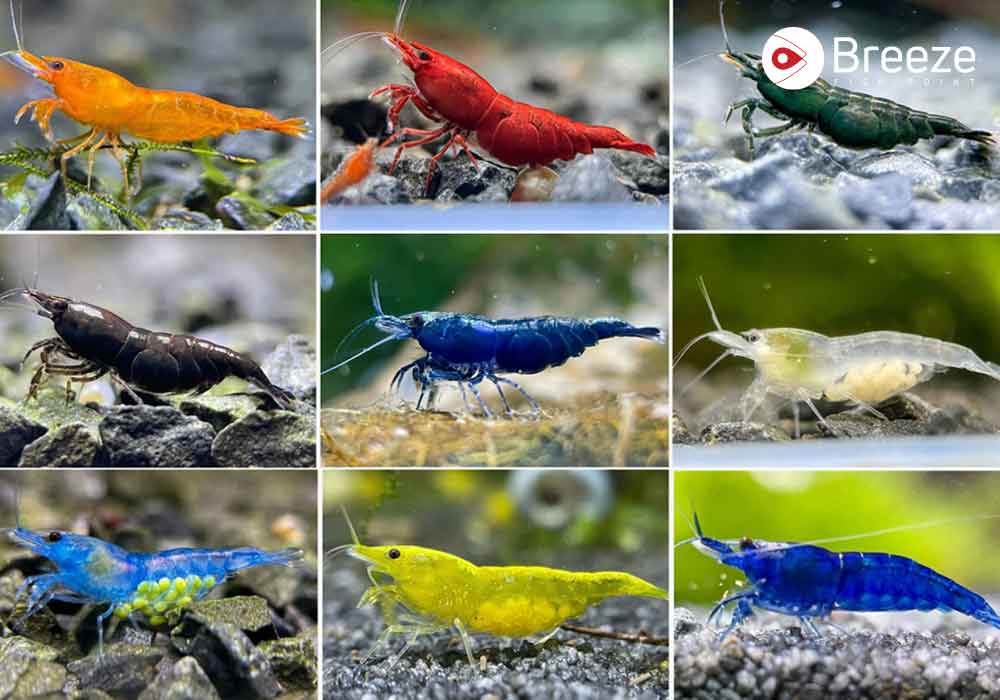
One of the coolest things about neocaridina shrimp is their rainbow-like variety. A skittles shrimp tank is a vibrant mix of colors, from cherry red to sapphire blue. Here’s a rundown of popular color morphs:
- Cherry Shrimp (Red): The classic, bold red that started it all.
- Blue Dream: A deep, velvety blue that’s a showstopper.
- Yellow Fire: Bright and sunny, perfect for a pop of cheer.
- Green Jade: A rare, emerald hue that’s hard to find.
- Orange Sakura: A warm, peachy tone that glows under light.
How to Get a Skittles Tank:
- Mix different color strains in one tank, but be cautious—crossbreeding can dilute colors over generations.
- Selective breeding can help maintain vibrant hues.
- Feed color-enhancing foods like spirulina to boost vibrancy.
Magic Tip: High-quality lighting (like LED with adjustable spectrum) can make colors pop even more in your live shrimp aquarium.
How Long Do Neocaridina Shrimp Live?
Curious about neocaridina lifespan? On average, these shrimp live 1–2 years in a well-maintained shrimp fish tank. Their lifespan depends on factors like water quality, diet, and stress levels. Here’s what impacts their longevity:
- Stable Environment: Consistent water parameters extend their life.
- Good Diet: A varied diet prevents nutritional deficiencies.
- Low Stress: Avoid aggressive tank mates like large fish that may eat or stress shrimp.
Pro Tip: Females carrying eggs (called “berried” shrimp) may have shorter lifespans due to the energy demands of reproduction.
What Should You Feed Your Cherry Shrimp Neocaridina?
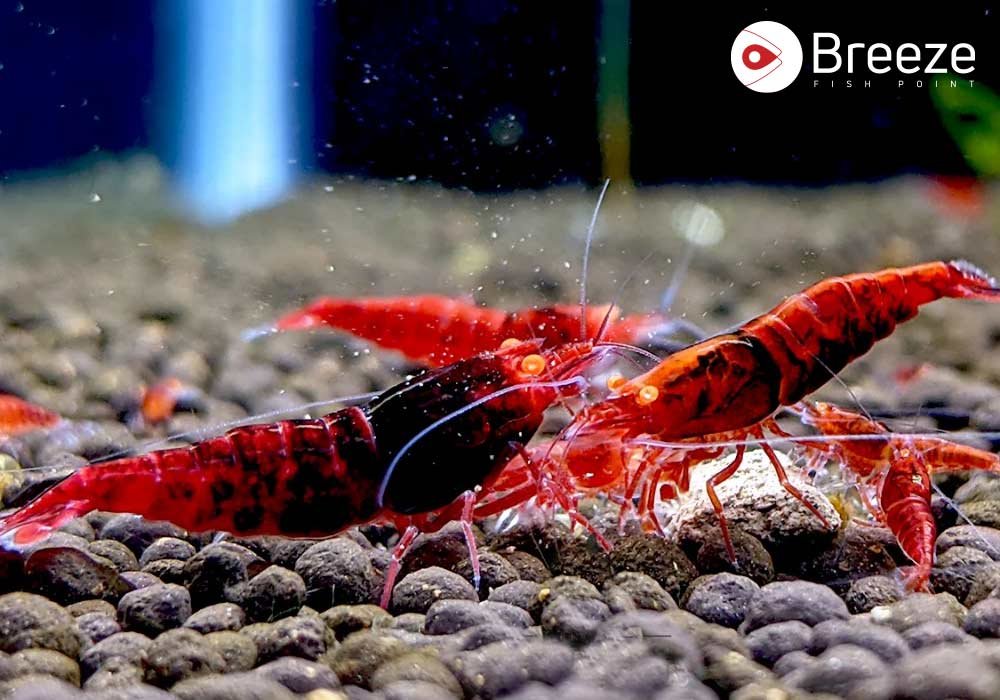
Feeding your cherry shrimp neocaridina is a breeze—they’re not picky eaters! These aquarium shrimp are omnivores, munching on algae, biofilm, and supplemental foods. Here’s how to keep them well-fed:
- Natural Foods: Algae, biofilm, and decaying plant matter are their favorites.
- Commercial Foods: Shrimp pellets, wafers, or flakes formulated for shrimp.
- Veggies: Blanched spinach, zucchini, or cucumber slices are a hit.
- Special Treats: Calcium-rich foods like cuttlebone support molting and shell growth.
Feeding Tips:
- Feed small amounts 2–3 times a week to avoid overfeeding.
- Remove uneaten food after 24 hours to prevent water fouling.
- Alternate foods to ensure a balanced diet.
Magic Tip: Dust veggies with a pinch of powdered spirulina for a nutrient boost that enhances color and health.
How to Care for Baby Shrimp in an Aquarium?
Baby shrimp in an aquarium are adorable but delicate. These tiny versions of neocaridina shrimp, often called shrimplets, need extra care to thrive. Here’s how to ensure your baby shrimp aquarium is a success:
- Safe Environment: Provide plenty of hiding spots like moss or fine-leafed plants to protect shrimplets from predators.
- Baby Shrimp Food: Powdered algae, biofilm, or specialized shrimplet food (like Bacter AE) supports their growth.
- Gentle Filtration: Use a sponge filter to avoid sucking up tiny shrimp.
- Stable Parameters: Shrimplets are more sensitive to water changes, so keep conditions consistent.
Pro Tip: Avoid tank mates that might eat shrimplets, like bettas or larger fish, until they grow larger (about 2–3 weeks).
Can Shrimp Be Kept as Pets in a Tank?
Absolutely, shrimp make fantastic pets! Shrimp as a pet are low-maintenance, entertaining, and add a unique vibe to your shrimp fish tank. Here’s why neocaridina shrimp are great tank buddies:
- Low Space Needs: A small 5-gallon tank is enough for a thriving colony.
- Interactive: They’re active and fun to watch, especially during feeding time.
- Eco-Friendly: They help clean the tank by eating algae and detritus.
- Breeding Bonus: You’ll soon have baby shrimp, making your tank a living ecosystem.
Magic Tip: Name your favorite shrimp for extra fun—trust me, you’ll start picking out personalities!
What Are the Scientific Names of Common Aquarium Shrimp?
Common Name | Scientific Name |
Cherry Shrimp | Neocaridina davidi |
Blue Dream Shrimp | Neocaridina davidi |
Yellow Fire Shrimp | Neocaridina davidi |
Green Jade Shrimp | Neocaridina davidi |
Amano Shrimp | Caridina multidentata |
Crystal Red Shrimp | Caridina cantonensis |
Bamboo Shrimp | Atyopsis moluccensis |


